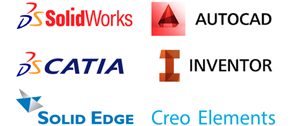
This photo shows 2066 Crist Drive, the home where Steve Jobs grew up, in Los Altos, Calif., Tuesday, Oct. 29, 2013. The Silicon Valley home where Apple co-founder Steve Jobs grew up and built some of his first computers is now on the city's list of historic properties. The historical commission in the city of Los Altos voted unanimously for the historic designation on Monday night, the Palo Alto Daily News reported. ((AP Photo/Jeff Chiu))
This photo shows 2066 Crist Drive, the home where Steve Jobs grew up, in Los Altos, Calif., Tuesday, Oct. 29, 2013. The Silicon Valley home where Apple co-founder Steve Jobs grew up and built some of his first computers is now on the city's list of historic properties. The historical commission in the city of Los Altos voted unanimously for the historic designation on Monday night, the Palo Alto Daily News reported.
Now that Steve Jobs' boyhood home in Los Altos is officially a historic property, I can add it to the Silicon Valley hot spots tour that I take my Midwestern relatives on when they come to town. I can almost see the summer day I drive my brother, fire captain Tim, over to see the valley's newest historic site.
Me: So, there it is -- Steve Jobs' boyhood home, just declared a historic resource by the Los Altos Historical Commission.
Tim: What? Where?
Me: That house right in front of you.
Tim: The one with the shake roof? Real tinderbox, my friend.
Me: Yeah, the shake roof.
Tim: That's just a dinky, one-story, regular, old ranch house. We must have passed 100 of them on the way here. I thought Steve Jobs lived in a 30-room historic Spanish colonial revival built for a copper baron in the 1920s. Bet it had a safe and sane copper roof.
Me: Good knowledge, but no. That's the Jackling house. Jobs tore that one down.
Tim: Why didn't they save that one and tear this one down?
Me: Are you nuts? This is the house where Jobs, Woz and some friends slapped together the Apple (AAPL) 1, a computer that changed the world. One sold in the spring for just this side of $700,000. They worked on it right there in that garage.
Tim: Wait. Another garage? What's with you people in Silicon Valley and garages? At least that other one you showed me had a plaque.
Me: That was the Hewlett-Packard (HPQ) garage, birthplace of Silicon Valley. For years it was rented out for $95 a month as a storage shed for Michal the Milkman, among others. HP finally bought it, along with the house in front of it, for close to a couple of million. Did a nice restoration, too.
Tim: But you can't actually go into that garage to see where it all began.
Me: No, but you can peer down the driveway and get a look from the sidewalk.
Tim: And then there was that Menlo Park garage -- no plaque.
Me: That was the Google (GOOG) garage, birthplace of the world's biggest Internet search company.
Tim: Is anything around here not born in garages? Kids maybe? Anyway, they wouldn't let us go into either of those historic garages. Can we go into this Jobs place?
Me: Afraid not. Jobs' stepmother still lives there. Nice woman, but she might feel a little put out if we traipsed through. I'm guessing a picnic on the lawn is out, too, given those two big signs, "No Trespassing: Security Cameras Are Filming. All Pictures Must be Taken From Street."
Tim: So, this Apple 1 sold for nearly 700 grand. That must be some computer they built in that garage. Is that what makes this cracker box worth $1.8 million?
Me: No. Being in Los Altos makes this cracker box worth $1.8 million.
Tim: So, we can't go in. No picnic on the lawn. Can't even get close for a picture. What good does this historic designation do, anyway?
Me: Well, I mean, with the designation you'd have to take a few extra steps before you could tear the place down.
Tim: Tear it down? It's a perfectly good house. Why would you tear it down?
Me: To build a bigger house, a two- or three-story house, one that takes up the entire lot and looms over its neighbors. It's what we do here. The Jobs' house, minus the historic designation, is what we call a scraper.
Tim: Cute.
Me: Look, this story is too good to wipe off the face of the suburban landscape. Steve Jobs and Wozniak, two kids meet through Jobs' high school friend, put their heads together and come up with a personal computer that the average geek, or devil worshipper, can buy for $666.66. Jobs sells his VW and Woz sells his HP calculator -- yes made by the plaqued-garage outfit -- to get the company rolling.
Tim: Wait. Apple, one of the most valuable companies in the world, got its start from a VW bug and a calculator?
Me: It was a VW van and a programmable calculator. And Jobs and Woz soon found investors. They'd meet them at times in bare feet and in that very garage. It was a different way of doing business.
Tim: I'll say.
Me: But it was a way of doing business that Silicon Valley embraced. Well, except for the bare feet part. The Apple founding story was confirmation that great ideas can come from anywhere. Dropouts? Why not? College kids? Sure. Who needs a fancy office or a full-fledged factory?
Tim: Why not start in a garage?
Me: Exactly.
Tim: Somehow I knew you were going to say that.
Contact Mike Cassidy at mcassidy@mercurynews.com or 408-920-5536. Follow him at Twitter.com/mikecassidy.
via apple - Google News http://news.google.com/news/url?sa=t&fd=R&usg=AFQjCNFF6qe_Vd8YVQhAJwLdCAx6PHBr2A&url=http://www.mercurynews.com/mike-cassidy/ci_24490464/cassidy-steve-jobs-los-altos-house-and-apples













0 comments:
Post a Comment